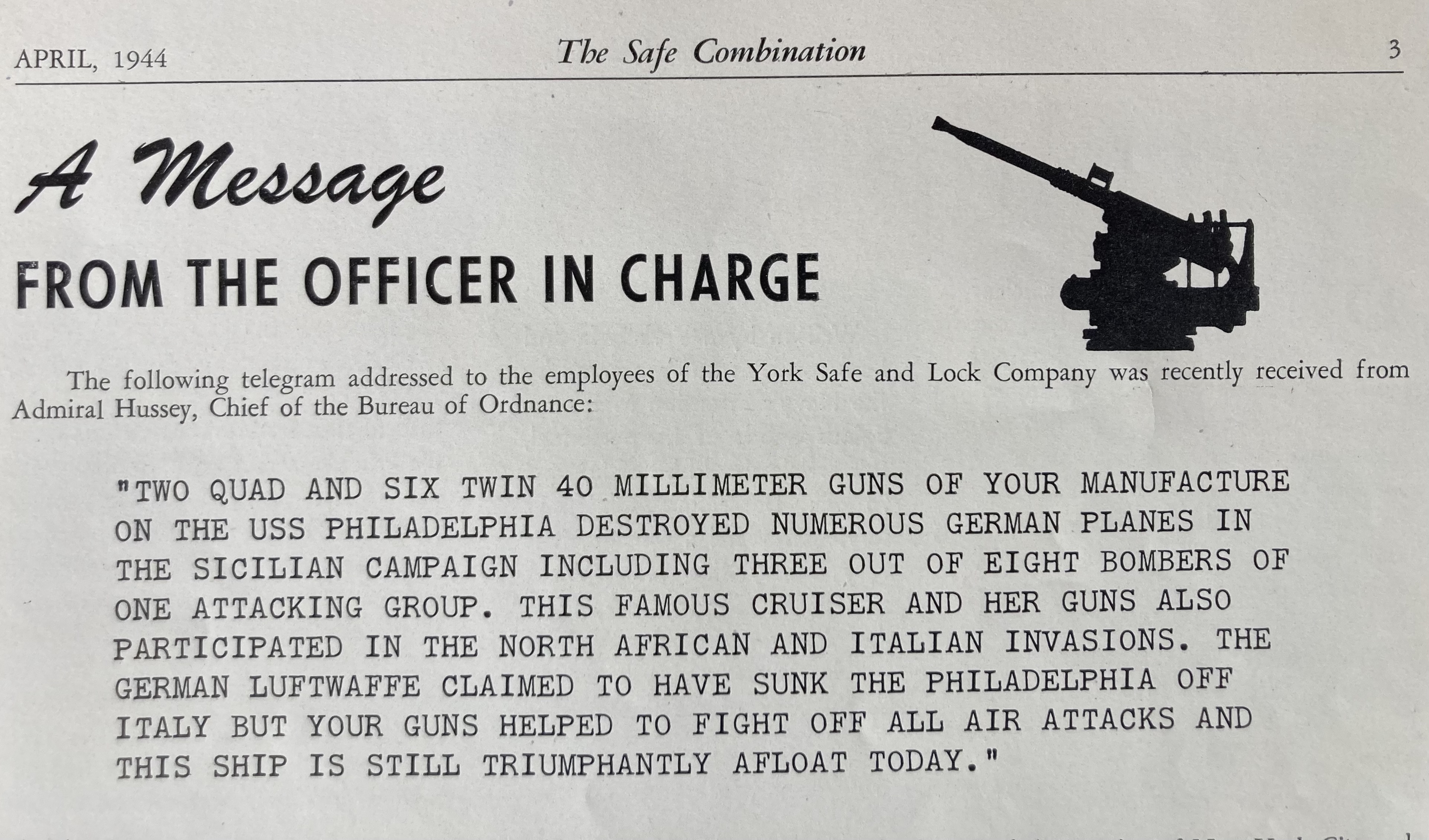During World War II, York Safe and Lock was among the many companies that modified their production facilities to help the war effort. It even expanded to multiple plants around York County in order to provide ordnance and other necessities for the Army and Navy.
But also during the war, in April 1942, company president S. Forry Laucks died. That was perhaps the beginning of the end for the company, as Stephen H. Smith explained on the blog YorksPast in 2012: "In 1944, the Levine Brothers, of Leominster, Massachusetts, sensed an opportunity, systematically began buying out York Safe & Lock Company stockholders at large prices; by year’s end they owned the company. While this was going on, the Navy Department in essence took over the York Safe & Lock Company because of the essential war materials being produced."1
After World War II, Harry Levine was named president and subsequently changed the name of the company to York Industries, Inc. Smith added: "In conjunction with the name change on January 3rd 1946, Levine sold the entire pre-war product line of safes, vaults and vault equipment; including trade names, patents, sales offices and franchised dealer organizations. This sale was to Diebold, Incorporated, they had been the second biggest manufacturer of safes and bank vaults in the country prior to the war."
And thus marked the end of York Safe and Lock.
During the war, it had this in-house company magazine, The Safe Combination. The first issue was in July 1943 and features Laucks, in memoriam, on the cover. I came across a handful of the magazines more than a decade ago and today I want to share just a few items from inside issue No. 10, from April 1944.
D.W. Wardrop was the editor of the magazine at that point, with Thomas Robison and S.T. Edwards serving as associate editors. Nineteen individuals from across the various York Safe and Lock plants are listed as "reporters." This issue's cover photo was taken by J.R. Miller of Dept. 458, Special Ordnance Plant.
Most of the news, of course, is related to the company's World War II efforts. There are updates on employees and their relatives who were serving in the military. There are also wartime items on gardening, gasoline conservation and the like. Finally, there's the social news you might expect to find in any company newsletter: banquets, sports leagues, etc.
The issue leads with this telegram about the USS Philadelphia on Page 3:
The center pages of the issue are dedicated to those service members and Merchant Mariners who had been killed in action on various fronts of the war, including this notice for Martin D. Irvin.
There are also letters from service members telling their tales from the front and/or expressing their gratitude for issues of The Safe Combination received in the mail. This one is from Pvt. Vernon F. Shepp. (Shepp survived the war. He died in York at age 69 in 1988.)
Here are some additional snippets of the magazine's interior, including a profile of Fritz Ahlfeld, a member of the company's management.
Footnote
1. Smith's in-depth and fascinating post also explains the role that Capone-buster Eliot Ness played in York Safe and Lock's demise.









No comments:
Post a Comment